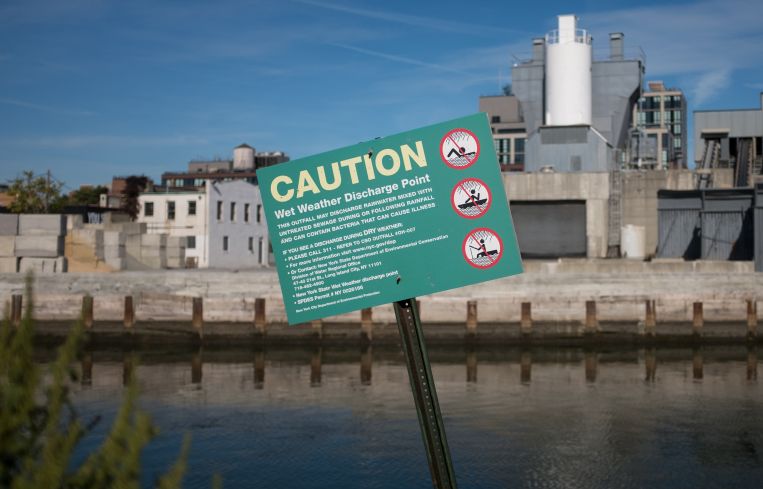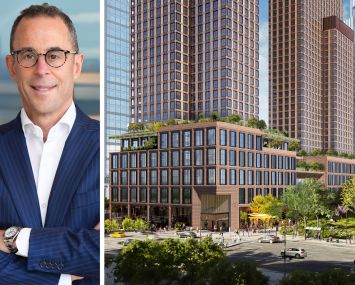NYC Kicks Off $1.6B Investment to Divert Sewage From Gowanus Canal
By Mark Hallum March 15, 2023 4:54 pm
reprints
If Gowanus is known for anything, it’s filthy water.
But that legacy may change down the line with not only the dredging of the Gowanus Canal and a rezoning away from industrial uses, but now the Brooklyn enclave is getting $1.6 billion in infrastructure to prevent sewage overflow during rainstorms.
Up to 3.6 acres of waterfront greenspace will accompany an underground tank stretching between Nevins Street, Butler Street, and Degraw Street and a headhouse will be constructed for mechanical equipment, Mayor Eric Adams announced Wednesday.
The initial investment from the city is about $329 million for the contract to excavate and build the tank with a capacity of 8 million gallons.
“The first of two massive underground storage tanks that together will prevent up to 12 million gallons of sewer overflow during rainstorms specifically,” Adams said during the announcement. “Sewage overflow has long been a problem in the Gowanus area, and especially during heavy rainfalls. These tanks and the improved drainage and pumping infrastructure around it will keep the Gowanus Canal cleaner and provide more space for recreation and community activities.”
The Environmental Protection Agency has been dredging toxic sediment from the bottom of the Gowanus Canal since November 2020 as part of a goal to remediate the superfund site by removing up to 581,000 cubic yards of material. The federal agency calls the waterway, which was created from tidal creek in 1860, one of America’s most polluted waterways.
November 2021 saw the New York City Council finally end about eight years of debate about how to revitalize the neighborhood when it voted almost unanimously in favor of rezoning to allow developers to build 22 stories of residential as of right. It would also grant public access to the waterfront.
“It was a thought that no matter what you placed in our waters, there was just such a vast amount of water around the city that you could never pollute it, and it could never destroy the internal structures,” Adams added. “That was wrong. And we’re now really having to deal with the sins of the past that’s now being passed down to the children of today.”
The rezoning seems to be working on the development side, too.
Last October, Quinlan Development Group landed $73.4 million of construction financing from First Citizens Group to build a 17-story multifamily project at 374 Fourth Avenue. Quinlan must have foreseen the rezoning getting approved by city council with the company filing plans in October 2021, Commercial Observer previously reported.
Mark Hallum can be reached at mhallum@commercialobserver.com.


